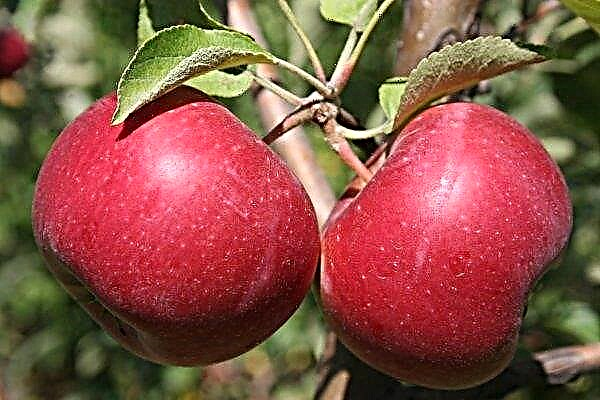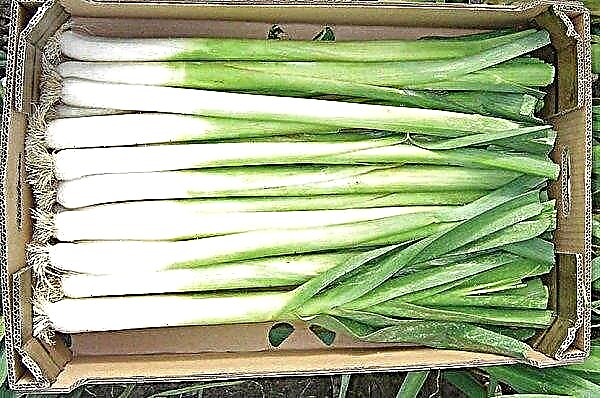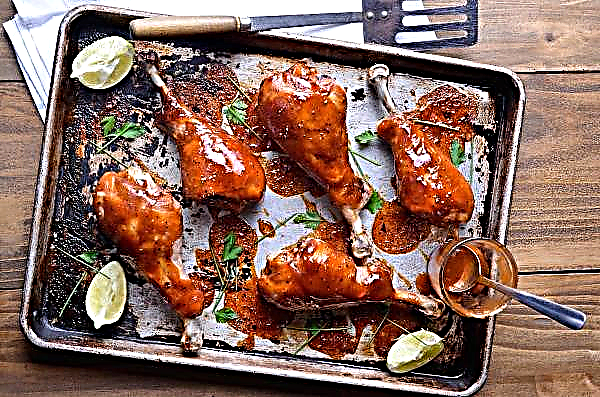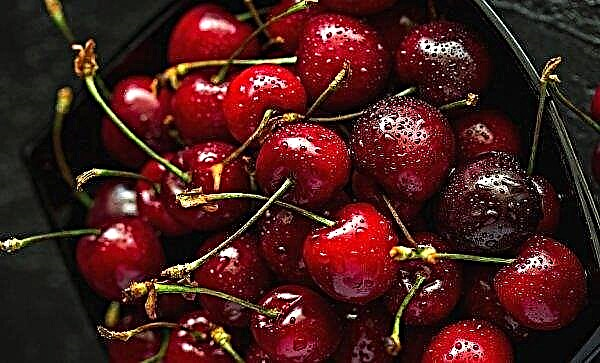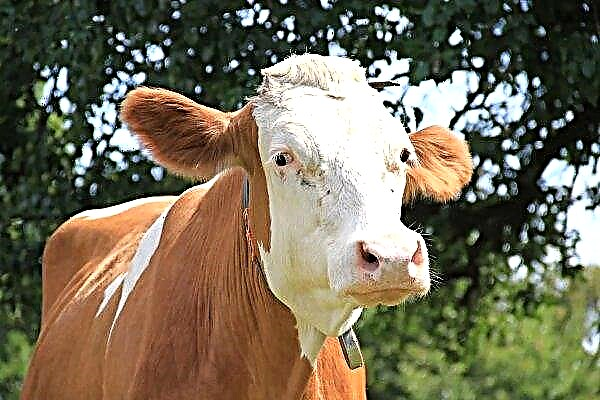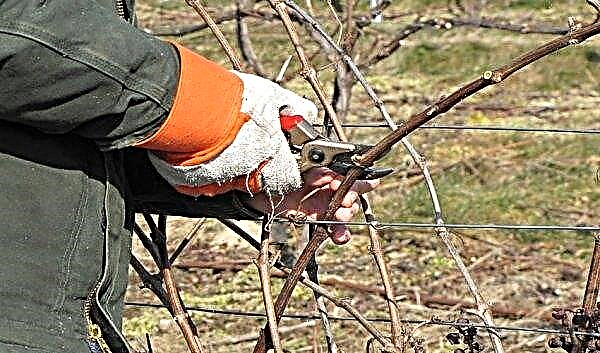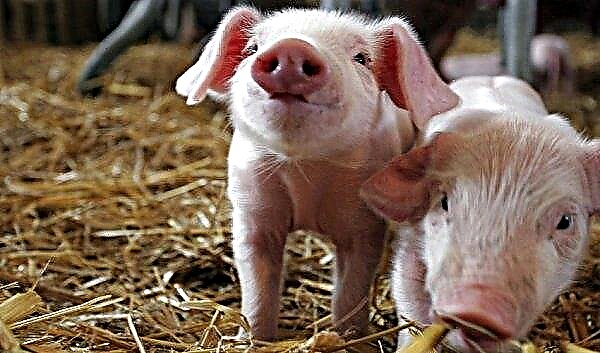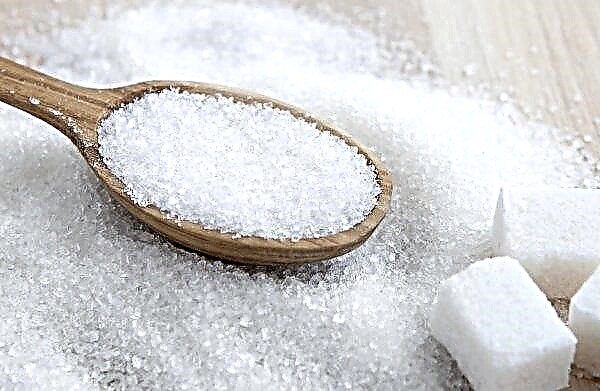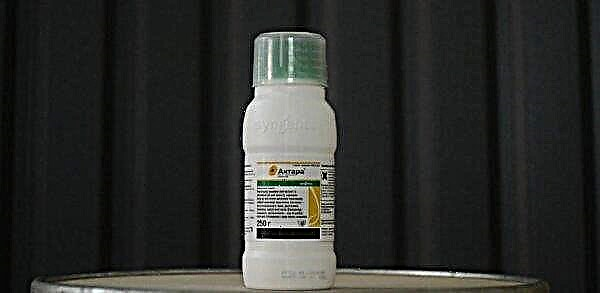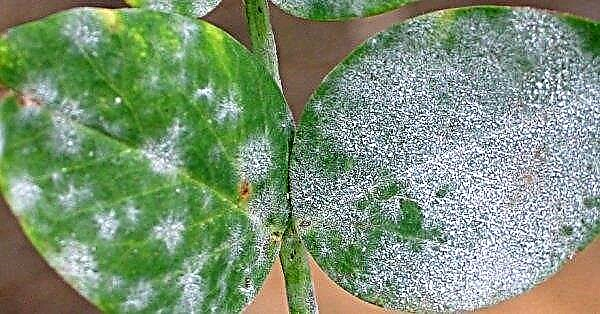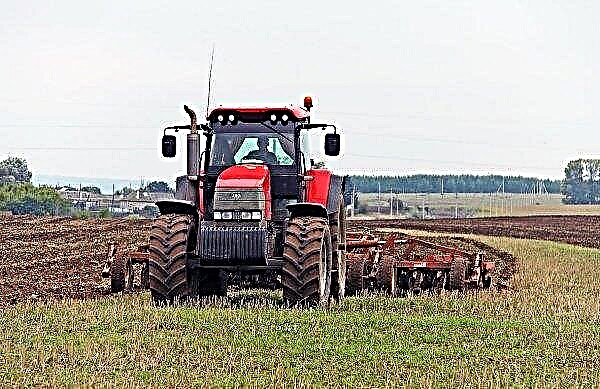Hydrangea paniculata, or panicled hydrangea, is a popular horticultural plant with a beautiful and varied flowering. The article will focus on the Bombshell variety, which is little known in our latitudes.
Grade description
It was possible to achieve the characteristics that the plant possesses over several years of selection work. The author of the resulting culture is the Dutch florist Alex Frederick Schomaker. Admission to cultivation in Russia and state registration of culture took place in 2010. Since then, Bombshell has confidently won the hearts of Russian gardeners.

Appearance
Plant height - up to 1 m, crown width - 1.2 m. The branches are flexible and thin, painted red-brown. Dark green leaves are large, up to 15 cm in length. Plate with wrinkles and serrated edges, ovoid with a sharp end. Depending on the composition of the soil and its acidity, the foliage may be light or bright emerald.
Did you know? The spherical crown of the Bombshell hydrangea is formed not by shoots, but by inflorescences. They are so heavy in their heyday that thin branches, unable to withstand their weight, bend and give the bush the appearance of a ball.
Panicle inflorescences are rounded and dense, 11 cm in circumference. Sterile flowers 3-4 cm in diameter predominate in them. First, the petals are white with a pale green tint, then, when opened, they acquire a pink color.

Characteristics
The variety is famous for its long flowering. Baskets open in early June and delight the eye until the first frost. The hybrid is resistant to low temperatures, but does not tolerate drought, as well as excess moisture in the soil.
With proper care, the culture is not susceptible to disease, rarely attacked by insects. He loves loose soils, responds well to both mineral and organic fertilizers. In the botanical description of the variety, there is a recommendation to grow hydrangea in acidic or slightly acidic soil.
Landscape design application
A low bush can serve as a living fence or decorate the shore of an artificial pond.
Hydrangea and flowering or fruiting shrubs originally look together:
- broom;
- lilac;
- viburnum
- mock-up;
- magnolia.
An unusual combination of lush inflorescences with a hemispherical bush of blue fescue, barley mane, which at the time of flowering is colored pearl pink.
Perennial and annual flowers perfectly adjoin and complement hydrangea:
- peony;
- purslane;
- nasturtium;
- garden cloves.

Landing
Flowering Bombshell begins the very next year after planting. For this to happen, the inflorescences were dense and beautiful, you must follow the rules of agricultural technology. First of all, choose a suitable place and prepare the site. When planning a garden design, you need to consider that the hydrangea root system grows wider than the crown.
Did you know? The initiator of landscape design can be called the ancient Roman emperor Claudius Caesar. The August gardener loved to create various compositions in the imperial garden, spent almost all his free time there.
The timing
The best time for planting is early spring, when the soil is already warmed up to + 8 ... + 10 ° С. In different regions, this is the beginning of April-May. In southern areas with mild winters, autumn planting is possible. In this case, you need to be in time 2 months before the first frost.
Site selection and preparation
Culture does not like direct sunlight, otherwise delicate petals and foliage get burned. Diffuse lighting or partial shade for the development of the bush is ideal. A low plant needs protection from the wind, but a natural fence in the form of tall dense shrubs should not completely obscure it. Before planting, the site is dug up, cleaned of plant residues, leveled with a rake.

Instruction manual
The landing hole is prepared with dimensions of 70 × 70 cm.
Further actions:
- The earth extracted from the pit is mixed with peat and sand in equal parts, adding half of the humus.
- Half are placed back to the bottom, forming a hill under the height of the roots.
- The seedling is placed on the embankment, straighten the roots.
- Sprinkle with the remaining soil, pressing it with palms.
- The seedling growth point remains above the surface.
- The last stage is watering, about a bucket of water.
To preserve moisture, mulching is recommended. Sawdust, straw or peat is laid in a layer of 6-8 cm in the trunk circle.
Outdoor Care
The first 4–5 years, the plant needs watering and fertilizing. It is important to monitor the cleanliness of the trunk circle, otherwise the grown weeds will draw moisture and nutrients onto themselves. After each watering, you need to loosen the soil, which saturates the roots with oxygen. The pruning procedure begins 5 years after planting.
Watering and fertilizer
It is necessary to water the plant in small portions, so that the earth is moistened 10-12 cm deep. Water should be at room temperature, the roots can get a shock and get sick from the cold. A lot of salts accumulate in water pipes, chlorine is present, which harms the plant. Water from the highway needs to stand 2-3 days.

In spring, hydrangea can be fed with organics. A kilogram of cow manure is poured with 3 liters of water and insisted for a week. The resulting composition was diluted with pure water in a ratio of 1:10. Fertilize the culture by pouring the mixture under the bush.
During the formation of buds, they are fertilized with a mineral complex, embedded in the soil:
- urea 15 g;
- potassium salt of 40 g;
- superphosphate 30 g
In July, mineral fertilizing is repeated. The last fertilizer is carried out in August: 40 g of potassium salt and 60 g of superphosphate.
Pruning
Before the buds swell, the culture is freed from broken and weak branches. Cutting branches growing in the middle of the bush will help to set the shape of the crown, shortening too long shoots to 3 buds. Too thick, twisted branches are also removed.

You can rejuvenate the old bush by cutting to a stump. In this case, young growth will appear only next year. A more gentle method is the annual pruning of all branches, except for 6-8 strong shoots. The procedure is carried out until the bush is completely rejuvenated.
Important! You can’t cut a plant in autumn: a weakened crop does not tolerate winter well.
Disease and Pest Prevention
Panicled variety can attack several types of pests and diseases.
Measures to combat misfortune:
- Chlorosis. To combat the disease, you need to spray 5% with iron sulfate.

- Tracheomycosis. The drug "Maxim" effectively fights against an ailment. The soil around the trunk is watered with 100 ml of the prepared solution: 2 ml per 2 l of water. The remainder of the mixture is sprayed onto the foliage using a spray gun.

- Gray rot, powdery mildew. The biological fungicide “Alirin-B” copes well with fungi. For spraying in a liter of water dissolve 2 tablets of the product.
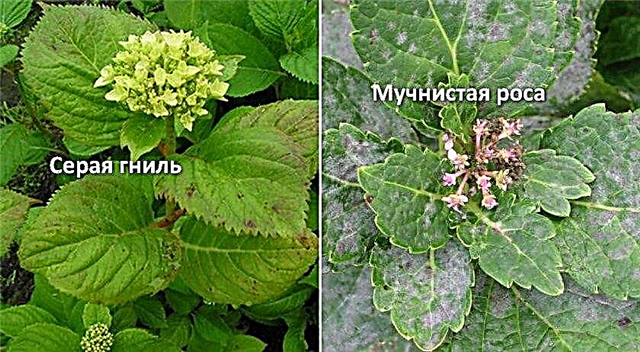
- Root nematode. Granules "Bazudina" scattered on the surface and embedded in the soil. Dosage - 1.5 g per 1 m².

- Slug. The pest is collected manually. With a large accumulation and for prevention, Bazudin is scattered in the near-stem circle. During the period of mollusk activity on the approaches to the flower beds, nuts or eggshells are scattered on the paths.

- Leaf beetles, leafworms, aphids. Apply the drug "Akarin", prepare a solution for spraying in a proportion of 2 ml per 1 liter of water.
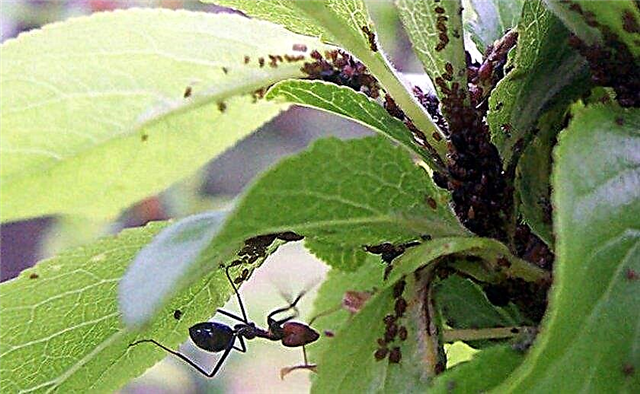
The best prevention will be compliance with the rules of care. Do not overdo it with watering and fertilizers.
Important! Excess moisture provokes fungal diseases, and an excess of any components in top dressing leads to problems with the development and flowering of the variety.
Wintering
In order to protect last year's shoots from freezing, the bush needs to be covered. Around the trunk make support from stakes. In winter, hydrangea is covered with agro material, spruce spruce branches are placed on top. Before you cover the branches, you still need to protect the root system. With a thick layer of 25-30 cm, put mulch in the trunk circle.
Propagation by cuttings
The fastest and most reliable way to propagate a variety is with cuttings. The procedure is carried out in the spring, the material is harvested before flowering.

Technology:
- Cuttings are cut at an acute angle, each should have at least 2 kidneys.
- A branch is placed in a container with wet peat, deepening one kidney into a substrate of 3 cm.
- Cover with a jar and put in a greenhouse, where it is regularly ventilated, condensate is removed from the walls of the shelter and moisten the soil.
- Transplanted into the open ground next spring, when the threat of return frosts passes.
Translated from English, the name of the variety means “bomb”, “thunder from a clear sky”, in slang - “beauty”. And this is consistent with the lush and vibrant flowering of culture. With proper care, the Bombshell hydrangea will become a real decoration of your site.







